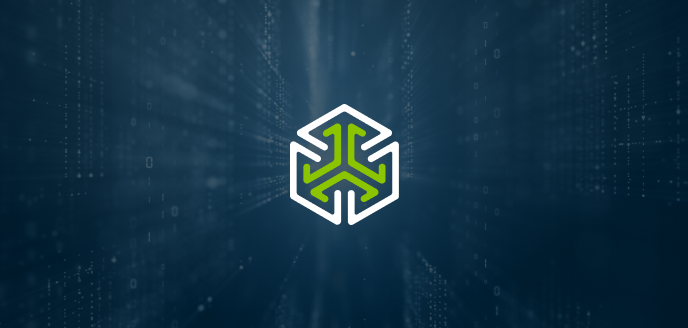Observability refers to the ability to collect, monitor, and analyze data within a system, and typically includes performance metrics such as latency rate, load times, network downtime, and more. Together, these technical metrics offer a real-time look into how a system is performing. Observability tools commonly utilize MELT telemetry data (metrics, events, logs, and traces). App and/or video-streaming services can use observability tools to identify and address issues promptly, ensuring the best possible user experience. Armed with relevant data, companies can optimize their content delivery strategies and drive higher user satisfaction. For example, if a streaming service experiences increased latency during peak hours, observability tools can flag the issue so it can be mitigated.
Tracking user interactions with a system—such as navigation patterns, feature usage, or session durations—offers insights into user preferences and pain points. Without the kind of knowledge observability provides, companies risk performance issues or service disruptions, leading to user frustration and ultimately the loss of customers. Today’s users expect a seamless digital experience, making observability tools a baseline for maintaining competitiveness.
Key Components of Observability
There are many components of observability. Two crucial ones are logging and tracing.
1. Logging
Comprehensive logging is essential for effective analysis and troubleshooting of system behavior. Various types of logs serve distinct purposes and track different things.
Access logs track every request made and record details such as the time of the request and the requesting IP address. Error logs track errors or exceptions and include context such as error messages and stack trace reports. Performance logs focus on system performance and resource utilization. Monitoring metrics such as CPU usage and memory consumption helps companies identify bottlenecks and optimize resource allocation.
Consolidated log data provides a comprehensive view of activities and events. It also allows for efficient analysis of behavior and performance. Aggregated logs need to be stored in reliable systems designed for large volumes of data. This helps ensure data integrity and accessibility. Features such as indexing and search capabilities make it easier to analyze log data.
2. Tracing
Distributed tracing tracks the flow of requests across different services and components. It allows for the identification of bottlenecks, latency issues, and errors across the entire system. Distributed tracing helps pinpoint the root cause of issues that span multiple components.
By integrating tracing tools into an observability strategy, companies can gain visibility into system dependencies—and optimize performance accordingly.
Tracking a wide array of metrics helps assess the functionality of video and app streaming services. Monitoring tools and dashboards visualize the backend data collected to provide performance insights at a glance. Continuous monitoring makes it possible to identify issues as they arise, as well as to trend metrics over time.
Some commonly used metrics include latency, bitrate, frame rate, and error rates.
- Latency: Latency refers to the amount of time it takes for data to travel on a network from one point to another. In the context of streaming, an example of latency would be the delay between a user’s action, such as clicking a button, and the system’s response.
- Bitrate: Typically expressed in bits per second (bps), bitrate refers to the amount of data transmitted over a network connection in a given amount of time. When it comes to streaming, a higher bitrate yields a higher video quality.
- Frame Rate: Frame rate, measured in frames per second (fps), refers to the frequency at which consecutive frames are displayed in a video. A higher frame rate results in smoother motion.
- Error Rates: This refers to the frequency of errors or anomalies encountered. Buffering, playback failures, or content interruptions are a few types of errors that impact streaming services.
Understanding these metrics is essential for assessing performance. Monitoring technical metrics provides actionable insights into system behavior. From everyday user interactions to large-scale live events with millions of participants, observability helps companies improve both system performance and the user experience.
Challenges of Traditional Observability
Businesses face a number of novel challenges today, making meeting user demands more important than ever. Users expect a seamless experience, regardless of device or location, adding complexity to the delivery of streaming or video content. Apps need to be available and responsive around the clock. But traditional observability has some limitations that don’t allow for a complete picture of the user experience. As systems become more complex and user expectations continue to rise, there is a growing need for more advanced observability solutions.
First, what are some of the biggest traditional observability challenges?
- Scale and Complexity
One of the primary challenges of observability is handling the scale and complexity of modern video and app streaming services. With millions of users accessing platforms at the same time, identifying issues can be challenging. There are vast amounts of data that must be analyzed even when one user accesses a platform. Storing, processing, and analyzing data takes time and resources. Additionally, managing the complexity of distributed systems and microservices compounds this complexity. There’s a need for sophisticated technology that’s up to the task of identifying issues in real time so that they can be resolved quickly.
2. Low-Level Metrics
Another challenge of traditional observability is the inability to track experience and engagement metrics. Traditional observability is a proxy, focusing on technical performance metrics rather than offering direct insights into user experience and engagement. It cannot capture or measure experience metrics such as login time, or other metrics based on raw events in real time. Lacking visibility into the user experience accurately aligned with app performance, teams may struggle to identify priority issues, risking wasted time and resources.
3. Difficult to Set Up Right Events and Metrics
Setting up events can be time consuming and challenging. Identifying the most relevant and meaningful metrics such as “rate”, “error”, and “duration” requires consideration and expertise. Implementing event tracking, and ensuring that it’s accurate and efficient, takes collaboration and multiple technical personnel.
Configuring event tracking includes defining properties, such as names and triggers, accurately enough to capture the desired information correctly and consistently. And once data collection begins, analysis and interpretation take time. Refining metrics and developing actionable insights can be iterative processes. In all, it can take months before events are fully operationalized, from the initial planning and setup phases to the analysis and refinement phases.
It’s Time to Switch to Conviva’s Experience-Centric Operations
Conviva’s Experience-Centric Operations (ECO) is a revolutionary solution to these challenges, executing on every level of monitoring–all in one native data set and all in real time. This comprehensive approach measures not just backend data, but all of what matters, giving companies a truly holistic view of their systems, instead of just inferences from the proxy measures of traditional observability.
With Conviva, businesses can have full visibility into the performance of their platforms with unparalleled monitoring and analytics capabilities. From client-side monitoring to errors, crashes, page load times, network request durations, and more, businesses will have the data they need to identify bottlenecks and areas for improvement.
Conviva doesn’t just quantify the user experience. Businesses can see exactly what the user sees, from logging in to adding an item to a cart. Dive deep into the user journey and gain invaluable insights into user interfaces, processes, and more–all of which can help to streamline and improve the user experience. Experience-centric observability delivers metrics derived from multiple sequences of events. Detailed user engagement metrics show the impact of backend performance on user behavior and retention. This level of understanding is critical for companies in today’s competitive environment.
How do your users engage? Why do they come back? With Conviva, you can understand what drives your customers–so you can make informed decisions that resonate with them, driving loyalty and retention.
Unlock the Advantages of Experience-Centric Observability with Conviva
Traditional observability is based on technical metrics, and lets companies infer what’s happening based on real data. However, knowing the internal state of a system based on its outputs isn’t the same as having a complete picture of the user experience. A comprehensive view of the customer experience is critical in order to make the most informed decisions–and to keep users coming back.
Video and app streaming services rely on the health and reliability of their platform for user satisfaction and revenue generation. Investing in a sophisticated observability tool, such as Conviva’s innovative approach, enables companies to be more proactive. Real-time monitoring and analysis capabilities can flag issues early on, before they impact users–or the bottom line. Experience-Centric Observability keeps companies ahead of the curve.





